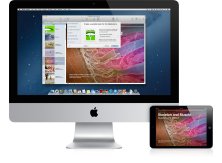
eBook Authoring
Module 5: eBook Distribution Options
Deciding how to distribute your eBook depends upon platform, eBook format, and financial goals. The sections below discuss the eBook distribution mechanisms appropriate for the situations indicated.
Apple Book Store
If you use Apple Pages to write in flowing EPUB or Apple's fixed format EPUB page layout, the Apple Book Store is the logical place to publish your eBook. Not only does the Apple Book Store let you publish eBooks that cost money, but also, the Apple Book Store lets you publish books that are free. Unfortunately, the Apple Book Store does not support the publishing of PDF documents. You can upload a PDF into your Apple Books library to read on your personal device, but you cannot publish a PDF for distribution through the Apple Book Store.
Amazon Kindle
If you want to publish an edition of your book for distribution on the Amazon Kindle platform, follow this link to Kindle Direct Publishing. There you can submit books written in a variety of formats, including Word (DOC or DOCX), HTML (ZIP, HTM, or HTML), Mobipocket (MOBI), ePub (EPUB), Plain Text (TXT), Rich Text Format (RTF), or Adobe PDF (PDF). Amazon recommends writing your book in MS Word, for which Amazon has written this eBook Manuscript Formatting Guide.
Barnes & Noble Nook
To create an edition of your book for distribution on the Nook, you can use the B&N Press, which is a Web application for self-publishing books on the Nook. You can see the details by following this link to B&N Press.
Public Domain eBook Publishing Repositories
Books that comply with the IDPF EPUB specification can be freely distributed in public domain eBook publishing repositories where your book is available free of charge. Such respositories are available at Project Gutenberg, the book section of archive.org, and the public domain section of Shmashwords.com.
Distributing an eBook From Your Web Site
You can also distribute an eBook freely from your own Web site. Simply upload the book's EPUB file to your website, and create a link for users to download it. The target of the link simply is the book's filename. When a user browses to your website and follows the link to get your book, it will download according to the client configuration of the user's device. On an iPad, for example, the book will download into the user's Apple Books library. On a Mac or PC, the book will go into the user's downloads folder, or it may go into an eBook folder if the user has installed a desktop ePub reader such as the Firefox ePubReader or Adobe Digital Editions.

